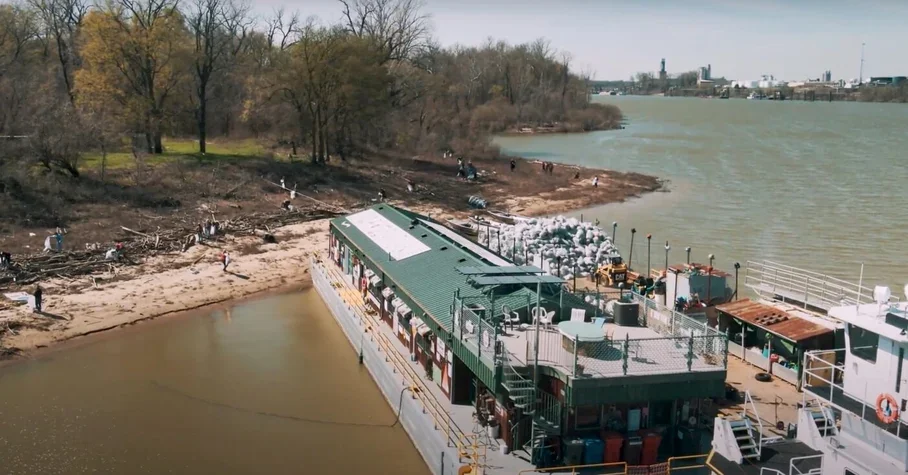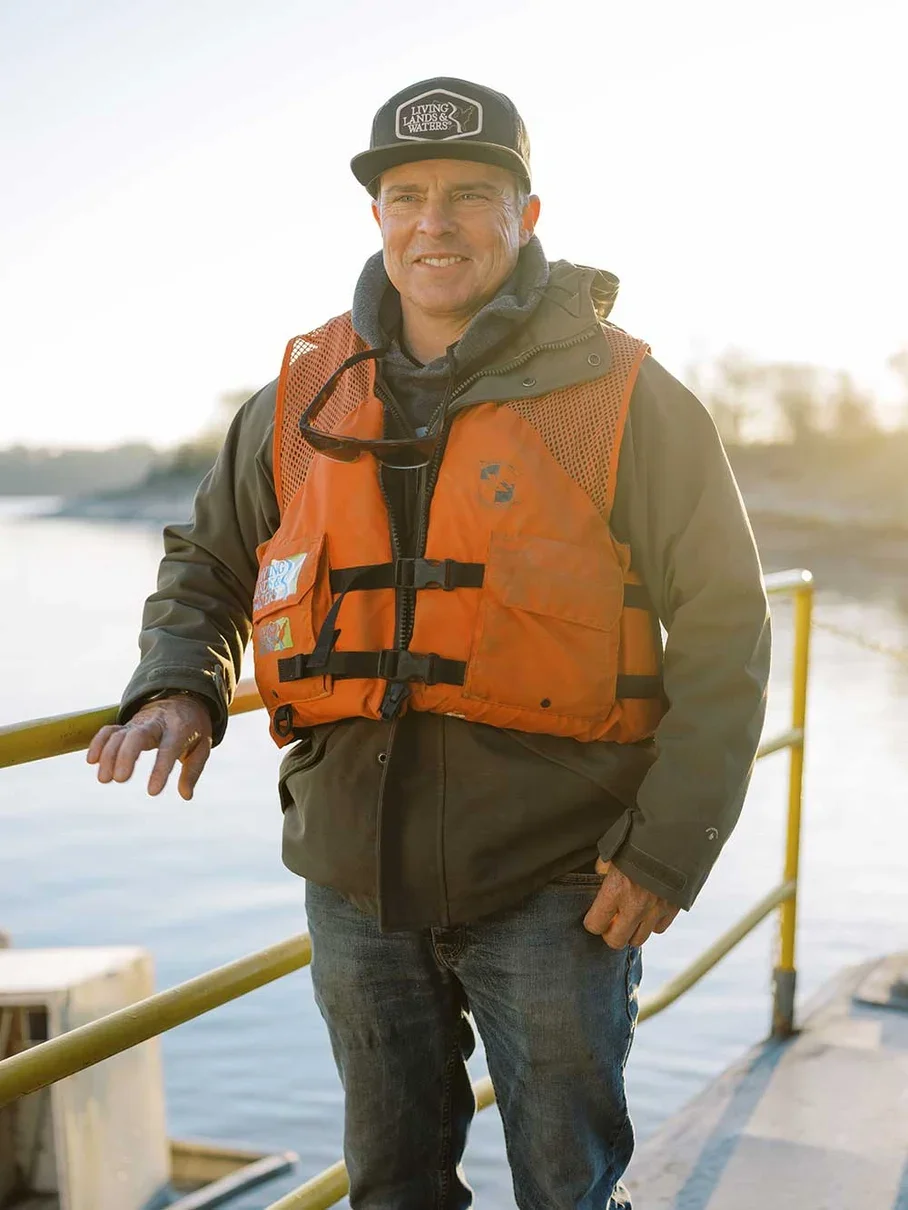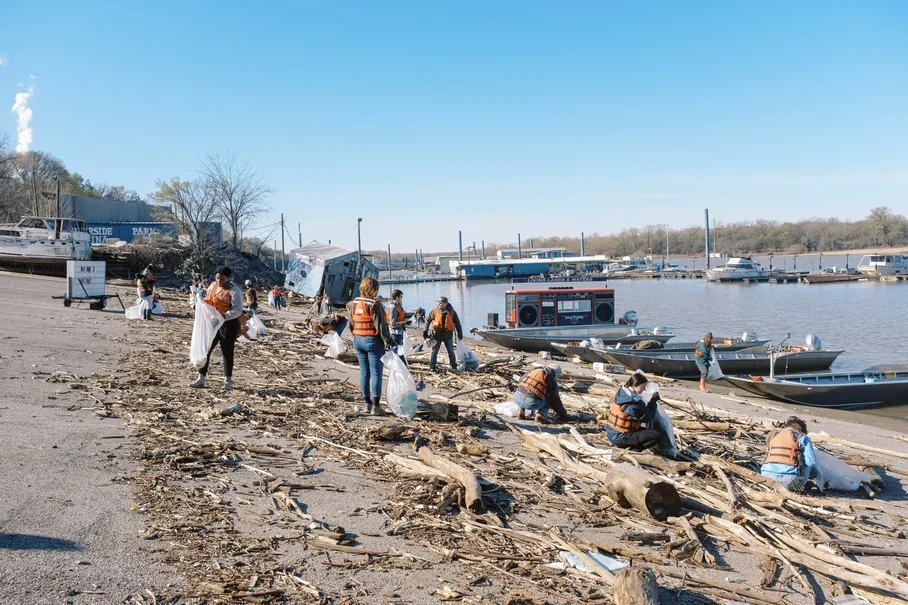Spring Breakers for River Conservation
by Rivers are Life Team
Living Lands and Waters on McKellar Lake
When Chad Pregracke, founder and president of Living Lands and Waters, picked Memphis for the Alternative Spring Break program, he didn’t just throw a dart at a map. McKellar Lake is filled with small plastics brought in from creeks that flow through the state’s cities. There’s so much to pick up that to effectively combat it, they need as many hands as they can get.
When the team first got to the lake 13 years ago, the situation was dire. “It was like nothing I had ever seen,” Chad said. The washed up litter was several feet deep and comparable to the levels of pollution found in major cities such as New York City and D.C. Over the course of the program, the crew and its teams of students have helped reduce the amount of waste. Each year, the spring break program picks up over 100,000 pounds of trash.
“It’s slow progress, but it’s positive change.”
The Nonconnah Creek specifically carries in a lot of pollution. The nearly 30 mile waterway starts in Shelby County and flows down to Memphis, bringing all of the litter-filled runoff from the city streets into the lake. But it isn’t just a threat to the inhabitants of McKellar. The lake is an oxbow of the Mississippi River from which 18 million people get their drinking water. The crew’s goal is to stop the trash before it gets to the river.
The barge functions as a floating home, classroom and a floating recycling center. The dozens of bags of trash the students collect are stacked on top of the deck, creating a striking visual statement about the amount of trash a team of just 63 people can collect in one week.
“Until you get out on the river and in these backwater channels, you may not realize the magnitude of the problem,” said Mike “Coach” Coyne-Logan, the program’s educational facilitator. But witnessing the barge stacked high with full trash bags makes the issues harder to miss.
The crew also works with volunteers from local recycling centers who sort through the bags. Chad is leading the charge to recycle large plastic pieces into new materials. While the students find abandoned toys and water-logged baby dolls to decorate the walls of the barge, the plastic pollution problem is a bit darker than the colorful collection makes it seem. But instead of taking the collected waste to the landfill, where it will continue to harm the environment, Chad and his wife, Tammy Becker, have started a new initiative through their business Green Current Solutions.
Innovative Solutions for River Health
Chad and Tammy were frustrated by the waste and cost of sending large plastic pieces to off-gas in a dump, and sought a better solution. When they discovered 43% of all hardwood trees were harvested for single-use pallets, they realized they could combine the two problems into one sustainable solution.
Through Green Current Solutions, the large plastics that were originally ocean-bound are turned into durable pallets that last at least ten times longer than wood ones. In addition to being more sustainable and forest-friendly, the pallets won’t fall apart and are safer for the workers moving them. They’re also zero-waste, as Green Current Solutions buys back the pallets at the end of their life to recycle into new ones.
There are several approaches to managing and intercepting macroplastics like styrofoam in waterways. One of the most prevalent approaches is to employ large filters, nets, or trap collections on rivers and streams to catch larger pieces of waste. In one study, a device designed to trap both macro and microplastics reduced the former by 43% on average, and in some areas were decreased by 95%.
Trapping and collecting macroplastics is highly important, but Green Current Solutions is completing the cycle of removing plastic from the environment by thinking of innovative ways to put it to use.
It will take concentrated simultaneous approaches to fully eliminate waste in our waterways. The best thing one can do on an individual level is to remove styrofoam and other trash from the environment whenever possible, and seek out businesses like Green Current Solutions to help process larger plastics.
“Plain and simple,” Chad says. “If you see a problem, you can do something about it.”
Creating Conservationists
The work the students do on the barge leaves a major impact on them. Many don’t want to leave at the end of the week because there is still so much more to do. But when they do return to their schools and hometowns, they arrive inspired and ready for action.
Some change their major, dedicate themselves to rivers, or strive to bring back what they’ve learned to their communities. Living Lands and Waters doesn’t just clean up rivers, it creates lifelong conservationists and leaders who will change the world around them.





